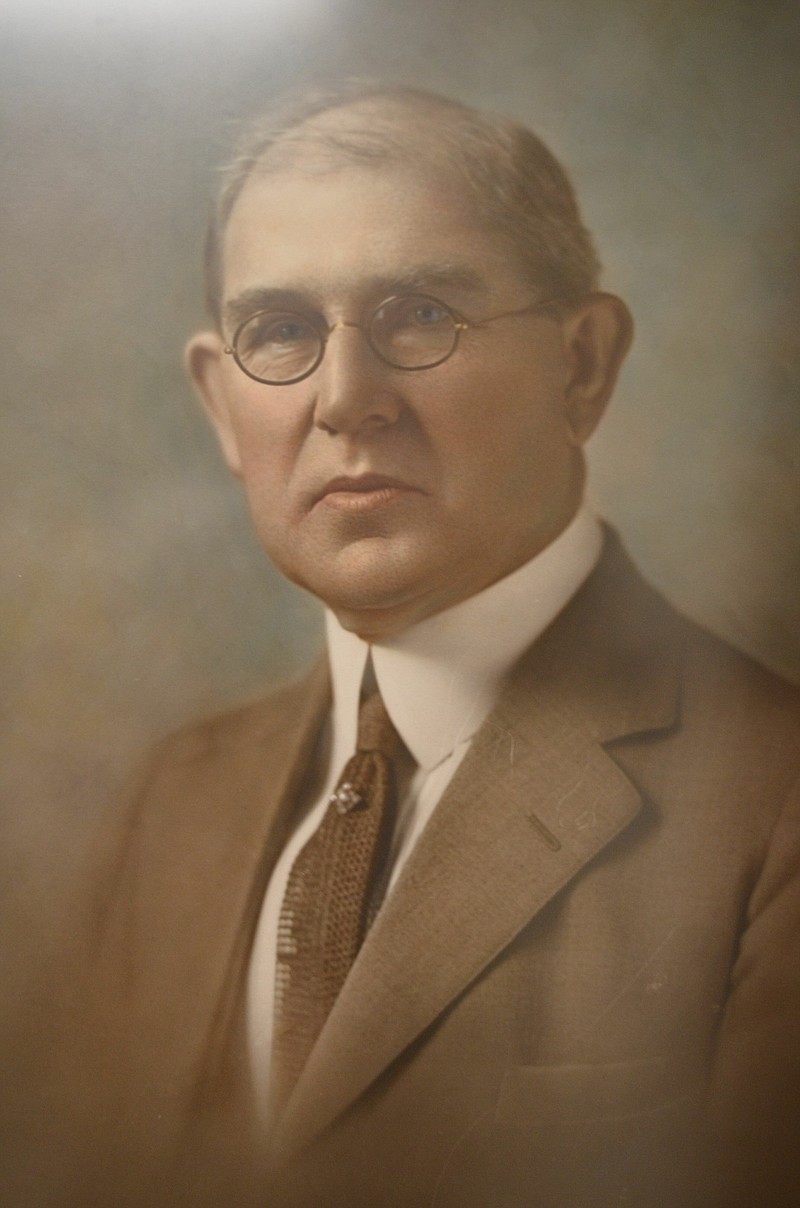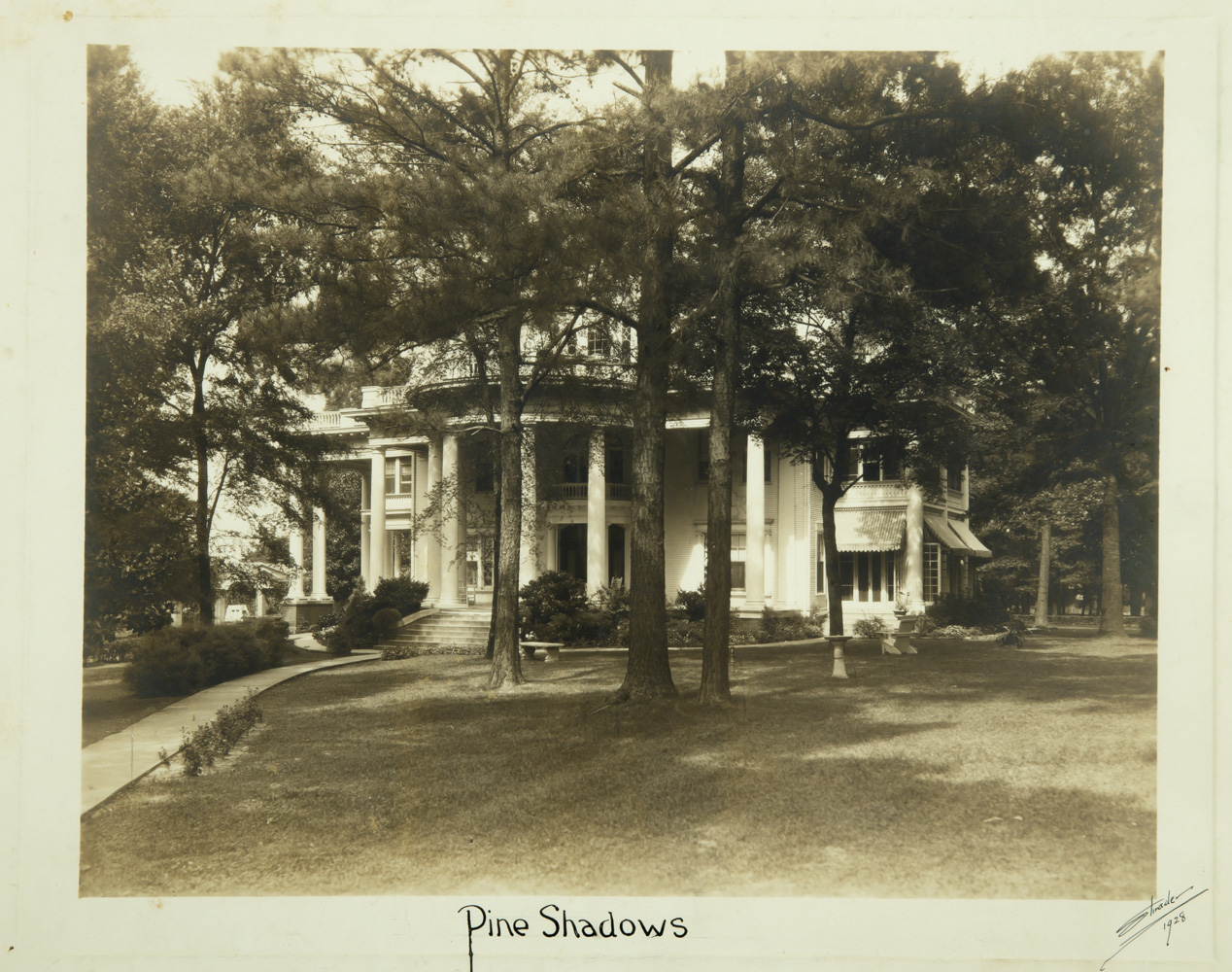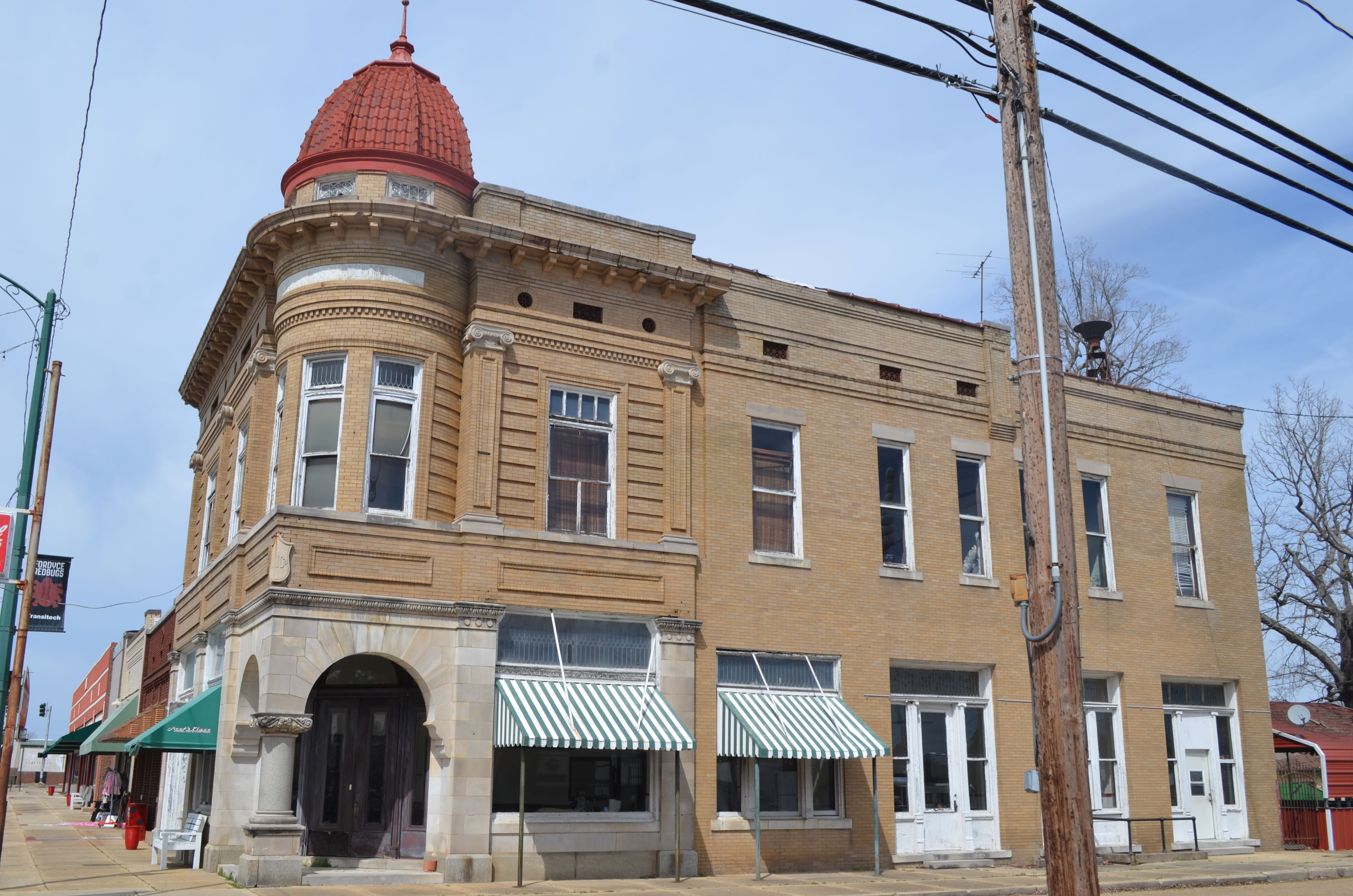Aloysius Burton Banks was born at Little Rock on April 2, 1868, when it was still little more than a riverside village. Along with his mother and father, a grocer and former Confederate officer, the family relocated to Monticello when A.B. was age 2.
"In 1881, he recalls riding horseback through the area soon to become the town of Fordyce enroute to Arkadelphia following the Warren-Princeton Road, the only passable thoroughfare thereabouts," according to a 1932 Fordyce News Advocate article.
The next year back at Monticello, the visionary heard about the little town of Fordyce springing up next to the newly laid Cotton Belt railroad tracks. Banks decided to come over and cast his lot with the tiny new berg. In 1882, at age 14, he settled in the town.
"His parents came in 1885 and in November of that year his mother S.A. Banks started a millinery business.
"Mr. Banks began his career most humbly as a rural school teacher but was soon attracted to the insurance business. In 1891, he started a local insurance agency. In 1900, he persuaded some friends to join him in the organization of the Home Accident Insurance Company with $50,000.00 capital. In 1905 the Home Fire Insurance Company was organized and in 1912, the establishment of the Home Life Company was completed," according to the article.
The last two decades of the 19th and first two decades of the 20th centuries were a period of growth and prosperity in Arkansas. With the accompanying arrival of major railroad construction into the region and the boon of a timber industry, the long lingering effects of the Civil War and Reconstruction were at last overcome and economic recovery fully begun, officials said.
Banks' investments grew, acquiring major interests in more than 50 Arkansas banks and gaining controlling interest in the Bank of Fordyce (now known as FBT Bank and Mortgage) in 1904.
The growth and progress of his three insurance companies soon required a move into the historic Home Life Insurance Co. building still located at the intersection of Third and Main streets in Fordyce. The copper domed structure has occupied that corner since 1906.
The 116 year old hallmark composition was the brainchild of turn-of-the-century architect Charles L. Thompson (1869-1959). Much like Banks, Thompson's life was a rags-to-riches story. In 1886, at age 17, he relocated from his childhood home in Illinois to Little Rock. His move was in response to an employment inquiry he'd posted in a national lumber journal. The notice attracted invitations from three different architectural firms in New York, New Orleans and Little Rock. He later stated he chose Benjamin Bartlett's company of Arkansas because, "it was the farthest in the wilderness."
Thompson projects can be found in 53 of the 75 Arkansas counties, including 15 of the 85 courthouses in the state. Of 2,500 structures erected in Arkansas from Thompson designs, no fewer than 143 are listed on the National Register of Historic Places.
The Home Life and Accident Insurance Co. building was accepted to the historic register on Dec. 14, 1982. Like all of Thompson's Arkansas creations nominated for the register, they were selected for being "unaltered from their original design, are visually significant and integral in each of their communities' historic streetscapes and representative of Thompson's 52 year practice."
Banks, like Thompson, proved to be an entrepreneur. As was the motto of his insurance company, Banks is quoted as often asking the pointed question: "Who will build Arkansas if her people do not?"
Along with his mother, S.A. Banks, as construction business partner, their commercial acumen was responsible for building more than 100 homes at Fordyce. The Banks' housing addition, including the entire NHR Charlotte Street Historic District, once contained Banks' own four story Pine Shadows mansion. Designed by Thompson and constructed in 1909, Pine Shadows became the showcase and centerpiece for cultural activities at Fordyce before television, movie theatres and radio.
Banks' granddaughter Charlotte Banks Brown of Little Rock spoke of her earliest memories in the Banks' home.
"It was a center of entertainment for not only the people of Fordyce but the entire region. Grandfather cast a wide net with his banking empire. Grandfather and grandmother, Lottie Banks, traveled extensively, filling the house with the most amazing antiques and porcelains brought from their journeys. With his vast timber interests, Grandfather had access to the finest building materials. The ballroom was exquisite mahogany paneling," Brown said.
Brown spoke of her parents Richard and Ann Banks.
"I grew up in a magical environment. We moved in with grandmother after grandfather died. Mother and daddy continued entertaining, carrying on the Pine Shadows tradition as a hub of activity for the entire state," Brown said.
Brown's father, Banks' son, Richard, perished in a December 1964 fire that destroyed Pine Shadows.
In addition to the A.B. Banks Home Life and Accident Insurance Co. building, Pine Shadows and the Charlotte Street Historic District, Banks was also a prime mover in construction of the city's circa 1912 Presbyterian Church located at 212 W. Fourth St. Its Gothic Revival style was the concept of Chattanooga architect Reuben Harrison Hunt. It was added to the National Register of Historic Places on Oct. 28, 1983.
While taking the grand tour of Europe with his wife Charlotte, the couple commissioned the church's 36 stained glass windows from the famed Murano family of Venice. Upon completion, they were used as ships ballast transporting them at no charge deep within the hold of an Atlantic crossing to New Orleans.
From that point they traveled by train to the railroad crossroads of Fordyce, where their appeal remains on display. The simplicity of the windows is reflective of Reformed theology. One aspect of the multi-colored glass is how it changes hue throughout the day depending on the angle of the sun.
The recent closure of two large U.S. banks hearkens back to Nov. 17, 1930, when Banks' financial empire suffered a similar fate. At that time, some 67 financial institutions controlled by Banks went into receivership within a matter of days.
Due to financial affiliations on a national scale between Banks' American Exchange Trust and Roger Caldwell of Nashville, Caldwell company losses in the crash of 1930 had drastic repercussions on Banks' investments in Arkansas.
Banks immediately announced severing of all ties of the American Exchange Trust with Caldwell in an effort to reassure investors that local businessmen by then owned all shares of his investment firm. However, nervous depositors queued up outside Banks' owned institutions to withdraw their funds.
A 2011 Arkansas Democrat-Gazette article by Tom Dillard depicted the issue:
"The severe pain of failure that gripped A.B. Banks was soon replaced with an indictment for accepting deposits in an insolvent bank. Historian Ben Johnson of Southern Arkansas University has written, 'In Arkansas the reviled A.B. Banks replaced the specter of impersonal economic forces as the source of people's misery,'" the article said.
"Prosecuting banks was the ambitious young Pulaski County Prosecuting Attorney Carl Bailey. In 1930 U.S. Sen. Joe T. Robinson, minority leader of the Senate, signed on as Banks' lead defense attorney.
"Even though Robinson worked hard on the case, his efforts were to no avail and Banks was found guilty. Appeals failed and it looked like Arkansas' greatest financier would be going to state prison for a year. Senator Robinson's influence no doubt helped Banks secure a pardon from Gov. Harvey Parnell," according to the article.
Legend holds how upon Banks' arrival at the penitentiary gates, the governor was waiting with his written release.
Banks returned to his hometown of Fordyce where he had done so much for the good of the community. Among his many accomplishments was helping bring the innovative technology of telephones and electric lighting to the community as early as 1897. He revived his insurance interests helping restore his fortunes. It is commonly held among Fordyce natives how Banks spent the balance of his days striving to repay all his creditors from the crash of 1930. Still holding a position of great esteem among his neighbors, he lived out his life in comfort until his death on Jan. 3, 1953, at the age of 84.
Longtime home to two well-known steak houses in South Arkansas, "Shotgun William's" and "Rock's Place," the historic Home Insurance Co. building at Fordyce is currently on the real estate market.
Five-term mayor, the late William Lyon, bought the structure in 1965 from Ann Banks, the widow of A.B. Banks' son, Richard.
"I tried everything in that location from a men's clothing store to a produce market," Lyon said. "What finally made a go of it was the Pine Tree Sandwich Shop and later Shotgun William's."
On Aug. 6, 2006, Don "Rock" Parrson acquired the building from Lyon, renaming the steak house, "Rock's Place."
Parrson maintained an operating restaurant for a number of years before his recent retirement. Besides a completely equipped downstairs restaurant, the second floor contains numerous offices and apartments.
For anyone interested in talking to Parrson about purchasing the A.B. Banks Home Life Insurance Co. building, his phone number is (870) 250-1884.


